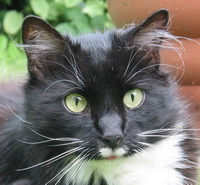Sunday 2 April 1911
Sunday 2 April 1911 has become very important in genealogical terms by being the day of the most detailed census to be undertaken up to that time. With all the previous censuses the household schedules were destroyed once the details had been transferred into the enumerators’ summary books. However for the England & Wales 1911 census both sets of records have been preserved. This means that the census documents as filled out in our ancestor’s own handwriting, complete with mistakes, misspellings & some additional comments are now available. Unfortunately the household schedules of the Scottish 1911 census were not preserved.
The 1911 population of Great Britain & Ireland was 45,370,530 approximately 56% more than fifty years previously. This was made up of 17,445,608 males & 18,624,884 females in England & Wales, with a further 2,308,839 males & 2,452,065 females in Scotland. Thus the general male/female split at that time was still approximately 48 males for every 52 females. The number of people recorded in England, Wales and Scotland with the Reffell surname was just 165, a minuscule proportion of 0.00035% of the total population. This consisted of 76 males & 89 females, there being the proportion of females in the family rather more than the national average.
The family had previously been largely London-based and there was still 82 of the family (just under 50%) living there, with other large branches in Surrey and Buckinghamshire. Smaller branches were to be found in Glamorganshire, Kent, Essex, Suffolk and Scotland. Of the 76 males recorded, 29 were to be directly enrolled into the armed services during the conflict that would start in just over three years time, with four of these dying in the war.
There were many varied occupations listed including; farmers, a working jeweller, some cabmen, an ironmonger, a marine engineer, a retired Inland Revenue assistant, a coffee house proprietor and an auctioneer & surveyor. Also included were people connected with the brewing trade such as brewers (some of whom had retired) and a manager of a beer bottling works. There were also men employed on the railways, including a stationary engine driver, a porter and a night watchman on the South Eastern & Chatham Railway.
Predominantly a male working force, there were more females working than previously with a surprisingly few listed as servants (28% of the working female population at that time whereas it had been 40% ten years earlier). Others were a pianoforte teacher, an office clerk, a barmaid, a restaurant cashier, a number of machinists, an examiner at an International school and an art student. Perhaps the strangest occupation was a female artificial teeth maker.
The 1911 census for England, Wales & Scotland was the most detailed questioning of a census up until that time.
Information recorded was :-
- Where an individual lived
- Name & Surname
- Relationship to Head of the family
- Age & Sex
- Marital status
- If female, duration of current marriage and number of children born, those alive and those dead (however this was often filled in mistakenly by the head or if the mother had died)
- Their place of birth
- Occupation and whether they were an employee or employer
- Details of nationality
- Number of rooms in dwelling (in Scotland, those with a window)
- Languages spoken (in Wales & Scotland only)
The count included all individual households, plus institutions such as prisons, workhouses, naval vessels and merchant vessels. It also attempted to make an approximate count of the homeless.
Frustrated with the government’s refusal to grant women the vote, a large number of women boycotted the 1911 census. There were two forms of protest. Firstly, there was a refusal to fill in the form, often recording their protest to the enumerator. Secondly, a number of women evaded the census by staying away from their home for the whole night. In both cases, any details relating to individual women in the households may be missing from the census. The exact number of women who boycotted the census is not known, although it may be as many as several thousand. Interestingly suffragette Adela Pankhurst was actually recorded on the 1911 census at 45 Marlborough Road in Sheffield. The entry is very vague as it has been carried out by the local Registrar of Births, Marriages & Deaths presumably without her assistance.

Finally, it has been widely reported that a man described one of the occupant of his house as ‘Peter Tabby’ and listed his occupation as ‘mouser’ and his nationality as ‘Persian’. The enumerator subsequently crossed out the entry with red ink and noted somewhat sternly: ‘This is a cat’. Unfortunately this particular entry has not been indexed.
Thomas Cooke of 37 Bentinck Street in Doncaster had a boarder called Jim the Cat whose occupation was listed as ‘mouse catcher’.
Frances Catherine Stone of 45 Claremont Road in Langley Heanor Derby was a 46 year old single music teacher living with Timothy the Cat aged 7 and Jack the Dog aged 8 (also crossed out).
However all this does give me a gratuitous opportunity to include a photograph of my own late cat called Lucky. For the avoidance of all doubt, it should be stated that he has not been entered in any census!